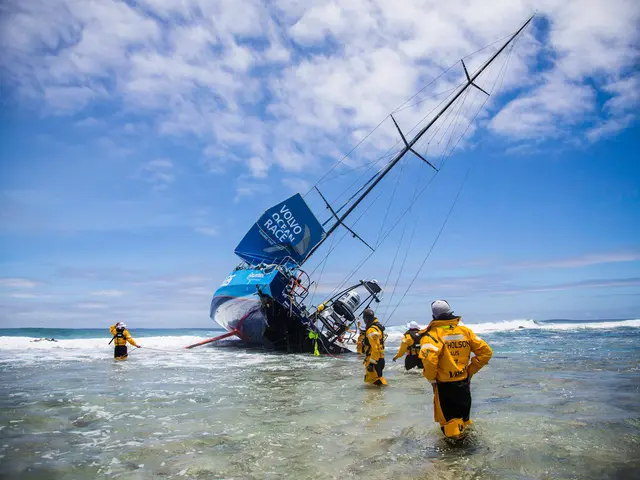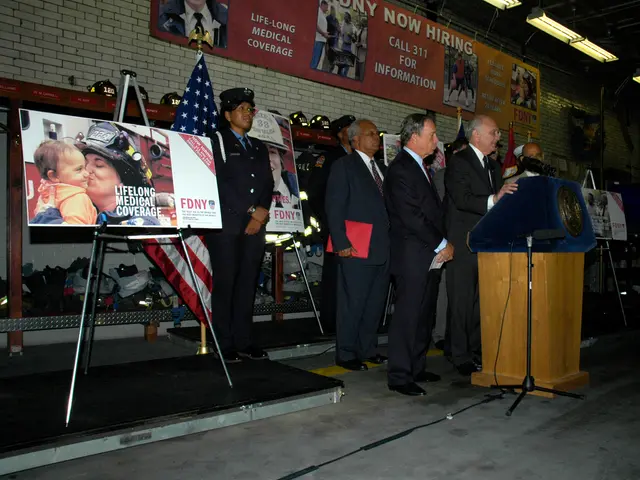Explanation of Non-CO2 Emissions and Their Impact on Condensation Trails (Contrails)
In the realm of aviation, a significant focus has shifted towards addressing non-CO2 emissions, which play a crucial role in climate warming. These emissions, primarily nitrogen oxides (NOx), fine particulate matter, and water vapour, contribute to contrail formation, a phenomenon that significantly impacts climate change.
The formation and size of contrails are influenced by various factors, making their presence difficult to predict with certainty. However, the aviation industry, including Airbus and broader stakeholders, is taking a proactive role to address this issue.
One strategy is Contrail Formation Mitigation. This involves optimising flight routes and altitudes to fly outside the atmospheric layers prone to contrail formation. Although this can increase fuel consumption, tradeoffs are actively studied to ensure net climate benefits.
Another approach is the use of Sustainable Aviation Fuels (SAFs). These biofuels, derived from biomass, waste, or synthetic processes, are designed to replace conventional kerosene. They can reduce net lifecycle CO2 emissions by 20–98% depending on the biomass source and production method.
Research and development are also ongoing into electric and hydrogen-powered aircraft, which could fundamentally change the emissions profile by eliminating or drastically reducing fossil fuel combustion products, including NOx and water vapour leading to contrails.
Industry Research Initiatives, such as the UNIC project led by ONERA, are focusing on tackling non-CO2 emissions, advancing scientific understanding and mitigation techniques related to NOx, particulates, and contrails.
Airbus is at the forefront of these initiatives. They are studying all alternative aviation fuels compositions for both CO and non-CO emissions, and the size of ice crystals formed from the water vapour they emit. Airbus is also leading a project called CICONIA within the EU-funded SESAR Joint Undertaking, aiming to introduce more accurate meteorological forecasts for optimised trajectories and flight planning.
The aviation industry is accelerating research into the most effective solutions for reducing or mitigating the impact of these flights. Airbus is working with the research ecosystem to understand the impact of real flights, with different fuel types and trajectories, on contrail formation. The focus is on understanding the impact of real flights on contrail formation and improving contrail impact modelling for future flights.
It's important to note that only 10% of flights, mostly long haul, create 80% of warming contrails. Persistent contrails, which can exacerbate climate change by trapping heat radiating from the Earth's surface, are relatively rare, accounting for only 10-15% of aircraft contrails and typically lasting only a few hours.
Contrails, white streaks behind aircraft at altitude, are essentially ice cirrus clouds formed by the transformation of water vapour in aircraft exhaust into ice crystals. Although cooling contrails exist, the majority have a warming effect, including all contrails emitted at night.
In conclusion, the aviation industry is making strides in addressing non-CO2 emissions, which contribute significantly to climate warming. By optimising flight operations, scaling sustainable aviation fuels, and developing next-generation propulsion (electric and hydrogen), the industry aims to reduce the impact of aviation on the climate. Furthermore, ongoing research initiatives are working to better understand and address these complex effects.
- The aviation industry, including companies like Airbus, is also focusing on environmental science, particularly in relation to the impact of non-CO2 emissions on climate change, aiming to address this concern through various strategies such as Contrail Formation Mitigation, the use of Sustainable Aviation Fuels (SAFs), and research into electric and hydrogen-powered aircraft.
- In the realm of finance, investments in the aerospace sector are increasingly being directed towards technologies that can reduce aviation's environmental footprint, such as advanced propulsion systems and alternative aviation fuels.
- As part of its commitment to environmental science, the aviation industry is cooperating with academic institutions, engaging in technological research, and developing new methodologies to model and predict contrail formation more accurately, ultimately striving for a sustainable and responsible relationship with the environment.








